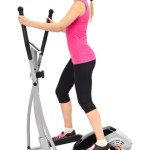 The Myth of 10,000 Steps
The Myth of 10,000 Steps
The Fitbit® craze seems to have swept the nation. People everywhere can be seen wearing expensive step counters around their wrists and walking in circles at the end of the day just to ensure that their counter turns from 9, 999 to 10,000. Self-esteem seems to be gained or lost by the number of steps one has achieved each day.
While I am all for heightened levels of physical movement throughout the day, the concept of 10,000 steps does not have any science behind it. So, to let the corners of your mouth rise and fall by the numbers of steps your taken that day seems silly to me when the fact is that the “10K” number of steps was arbitrarily chosen back in 1960’s when a Japanese company began marketing a pedometer called the “manpo-kei”, which translated, means “10,000 step meter”.
Most Americans would certainly benefit from increased physical activity. But we would do better to have a more scientific gauge. What science does tell us about personal exercise goals to be achieved has to do with exercise duration and intensity. Let’s break those two parameters down so they are well understood.
Duration: The recommended time frame for exercising is 150 minutes per week, broken up any which way you’d like it—5 days of 30 minutes, one day of 150 minutes or any other combination will do.
Intensity: The recommendation is to perform the above duration of activity at a “moderate intensity”. This is measured by your heart rate (number of beats per minute). The scientific way to calculate this requires a calculator.
Moderate level = 50-70% of your maximal heart rate;
and your maximum heart rate = 220 minus your age.
So, for myself, the calculation would look like this:
50% Intensity: 220 – 51 = 169 x .5 = 84.5, round up to 85
70% Intensity: 220 – 51 = 169 x .7 = 118.3, round down to 118
Therefore, if I exercised 150 minutes per week while maintaining my heart rate somewhere between 85 to 118 beats per minutes, my goal will have been reached and my scientifically proven health benefits attained…and then I could save my wrist space for something “a bit” more attractive!